Learn about tongue-tie and lip-tie in infants, current research on breastfeeding and frenulotomy procedures, and how compassionate, individualized care can help families thrive. Written by a board-certified pediatric dentist in West Los Angeles.
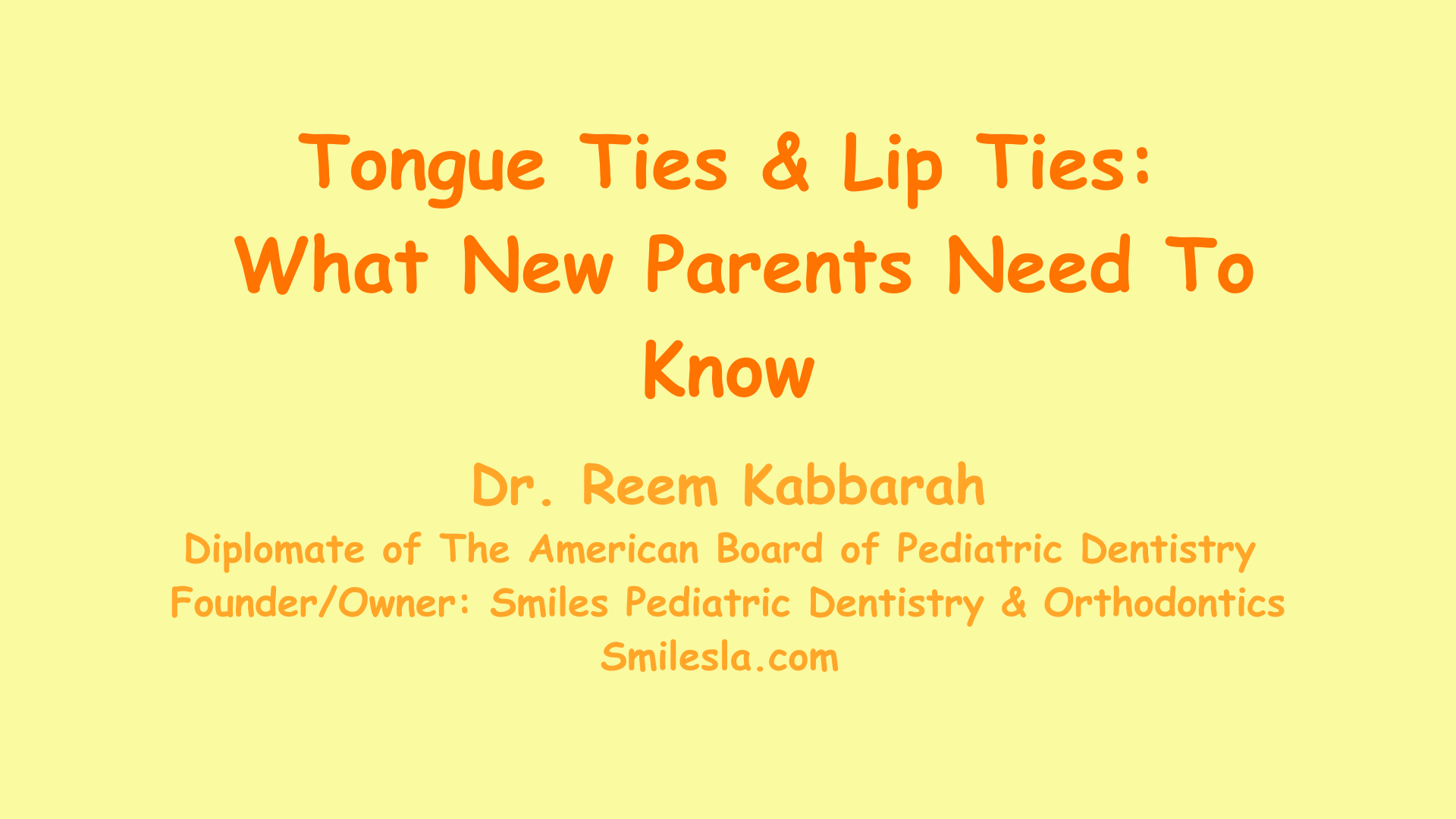
Welcoming a new life into this world and experiencing the unconditional love that it brings with it is a transformational experience. A deep desire to nurture and protect this new presence naturally follows as new parents collaborate to provide their newly born with warmth, safety, and nutrition.
Many new mothers who choose to breastfeed are surprised to find out that the process, as intimate and rewarding as it is, has a bit of a learning curve. The early days of breastfeeding bring both joy and unexpected challenges. Painful feeds, difficulty latching, or concerns about milk transfer often lead parents to wonder whether a tongue-tie or lip-tie could be the cause.
In recent years, the number of infants undergoing tongue-tie (lingual frenulotomy) and lip-tie (labial frenulotomy) procedures has grown significantly. At the same time, leading pediatric and dental organizations are actively studying these trends to better understand when intervention is appropriate and when more conservative approaches may be equally effective.
As a pediatric dentist and a mother, I approach this topic with both clinical precision and deep compassion for parents navigating these concerns. My goal is to help parents feel informed, empowered, and supported. I also aim to ensure that newborns are not subjected to unnecessary procedures and that we practice in a way that offers true benefit and gentle, loving care for every child that we welcome into our practice.
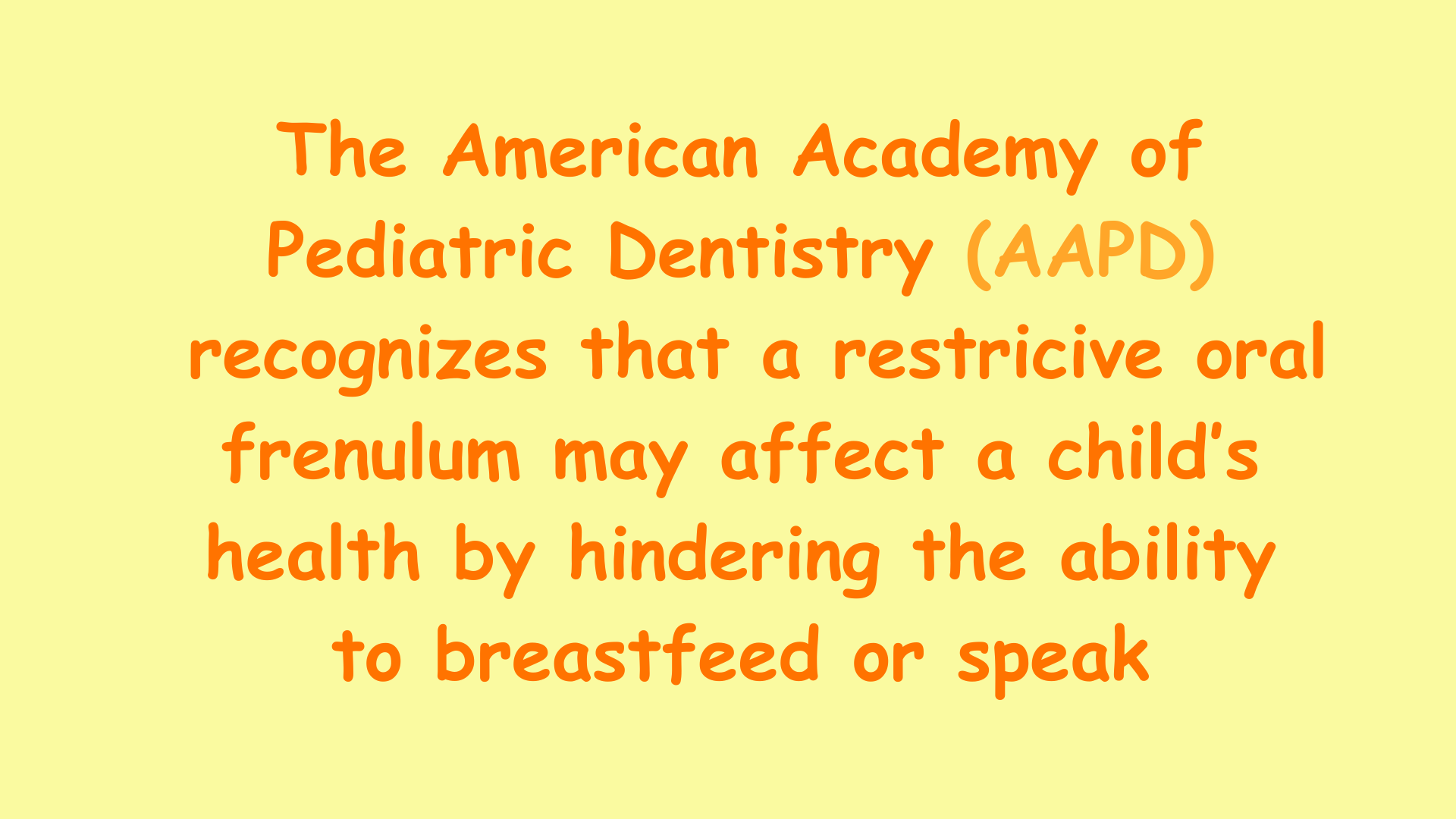
What Are Tongue-Ties and Lip-Ties?
Ankyloglossia, or a tongue-tie, occurs when the thin tissue band under the tongue (lingual frenum or frenulum) which attaches the tongue to the floor of the mouth is unusually short, thick, or tight, potentially challeging tongue movement.
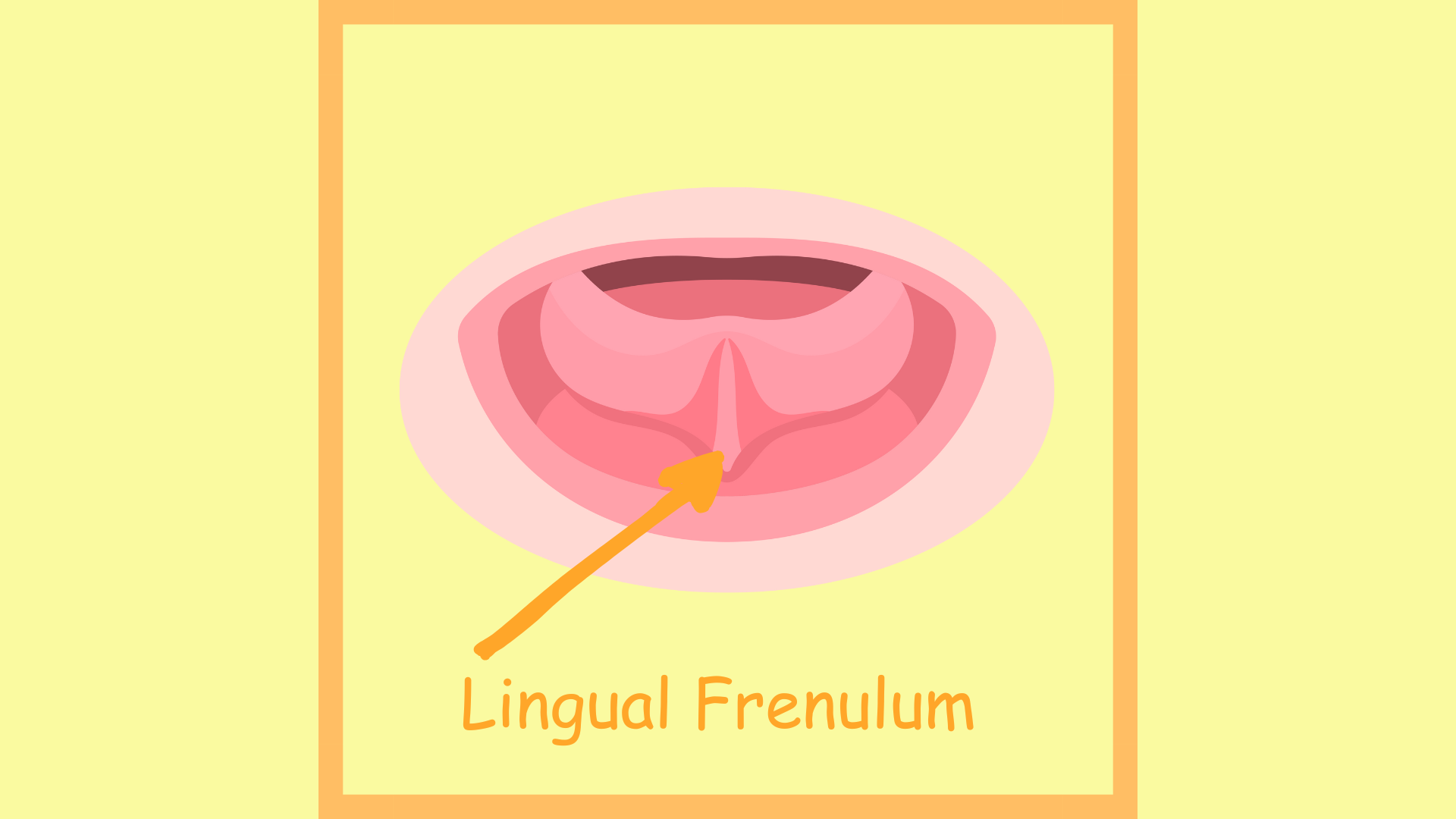
The band of tissues that attaches the upper lip to the gum pads is what forms the labial frenum or frenlum. Similarly, a lip tie refers to a tight, thick, or restrictive upper lip frenum. Restrictive tissues can also be refered to as “tethered oral tissues” or TOTS.

Tongue ties and lip ties during infancy have been associated with:
- Breastfeeding difficulties
- Nipple pain or trauma for mothers
- Clicking or ineffective suckling
- Poor milk transfer
- Infant weight gain challenges
- Potential oral development concerns
Other potential issues that have been linked to restrictive frenula during childhood years and beyond include:
- Challenges with cleaning the upper front teeth, placing them at risk for tooth decay
- Speech development concerns
- Airway, breathing and swallowing quality
- Gapping between the two front teeth (also known as a diastema) and orthodontic needs
- Food sensitivities or aversions to sticky foods that cannot be cleared from the mouth due to limited tongue mobility
- Long-term periodontal tissue quality for teeth near the sites of extensive frenulum tension

How Are Tongue-Ties and Lip-Ties Diagnosed?
Mindful diagnosis of lip and tongue ties requires close assessment of the functionality of the tissues rather than visual classifications. Even with a true tongue or lip tie, where the frenula are very tight, short, or restrictive, there are cases where no major problem with breastfeeding is ever noted.
A sound understanding of normal anatomy is necessary because oral tissues vary in appearance and normalcy and are ever remodeling as infants grow and mature. Diagnosis in toddlers and children tends to be easier as further growth occurs, teeth erupt, and the oral tissues settle into place.

Understanding the Terms: Frenotomy vs. Frenectomy vs. Frenuloplasty
To understand the different terms used to describe procedures on the oral frenula, the American Academy of Pediatric Dentistry (AAPD) offers the following distinctions:

- Frenotomy (or Frenulotomy):
A Frenotomy is the most commonly performed procedure in infants. It involves a simple incision or release of the frenum to free restricted movement. Often performed with scissors or a dental laser, an infant tonge-tie release or an infant lip procedure is a quick, minimally invasive procedure designed to improve tongue or lip mobility when functionally indicated.

- Frenectomy:
The term frenectomy or frenulectomy has been commonly used in parental online forums to refer to what is really an infant frenotomy procedure. A true pediatric frenectomy is a more involved procedure that entails full removal of the frenum tissue.
Frenectomies are typically reserved for older children or adolescents when the frenum contributes to orthodontic challenges (such as gaps between the teeth), speech issues, or recurrent tissue trauma. Complete removal may also the last resort if a simple release is insufficient.

- Frenuloplasty:
This is a more involved surgical reconstruction of the frenum. It may be used when the tissue is especially thick, scarred, or requires repositioning. Sutures are often placed to promote healing in a more favorable anatomical position. Frenuloplasty is rarely needed for infants.
It is reserved for very select cases where structural or breathing anamolies are noted.
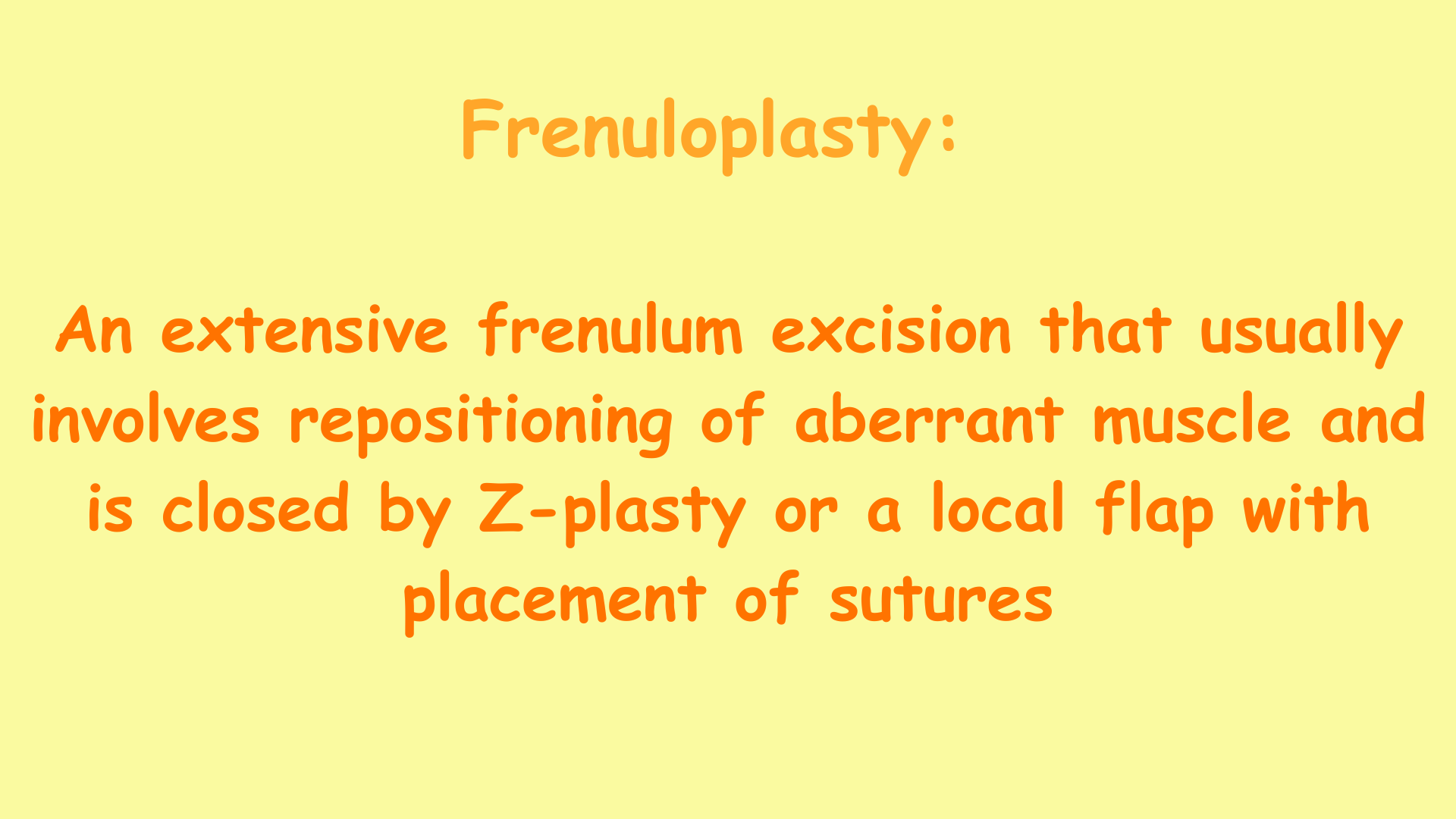
In our practice, gentle infant frenotomies and mindful pediatric frenulectomies are performed using our advanced Solea CO2 laser technology, ensuring precise release with minimal discomfort and rapid healing.
Why Are So Many Frenectomies Being Performed on Infants?
According to studies published in JAMA Otolaryngology and data reviewed by the American Academy of Pediatrics (AAP), The number of frenotomy procedures has risen exponentially over the last decade. Some studies report increases of several hundred percent over the past decade, with certain specialty centers observing rises of up to 500% or more.
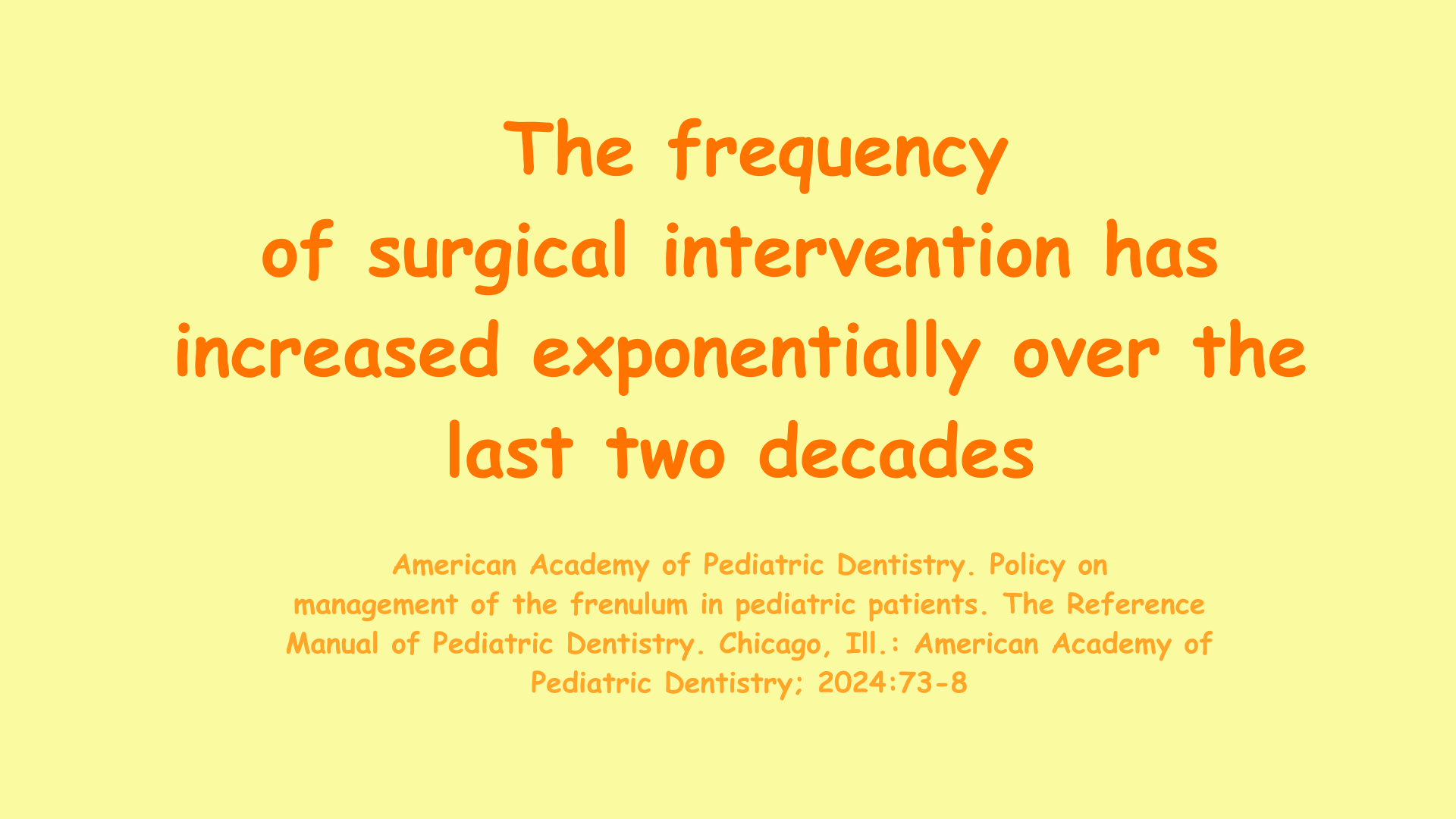
This rapid rise has sparked important conversations within the pediatric medical, dental and lactation communities.
The American Academy of Pediatric Dentistry (AAPD), including its current Task Force on Tethered Oral Tissues, is actively reviewing available evidence to better define clear guidelines for when these procedures are necessary and when they may not be.
What Does the Research Say?
Several well-designed studies, including systematic reviews and Cochrane analyses, suggest that for some breastfeeding pairs, particularly those experiencing severe latch difficulties and maternal nipple pain, a carefully performed tongue-tie release may improve comfort and feeding mechanics in the short term.
- The 2017 Cochrane Review (O’Shea et al.) concluded that frenotomy may reduce nipple pain for mothers experiencing feeding challenges.
- However, long-term benefits for breastfeeding duration, speech outcomes, and growth remain less definitively supported by convincing evidence.
- Data for lip-tie procedures is even more limited and largely based on clinical judgment and emerging research.
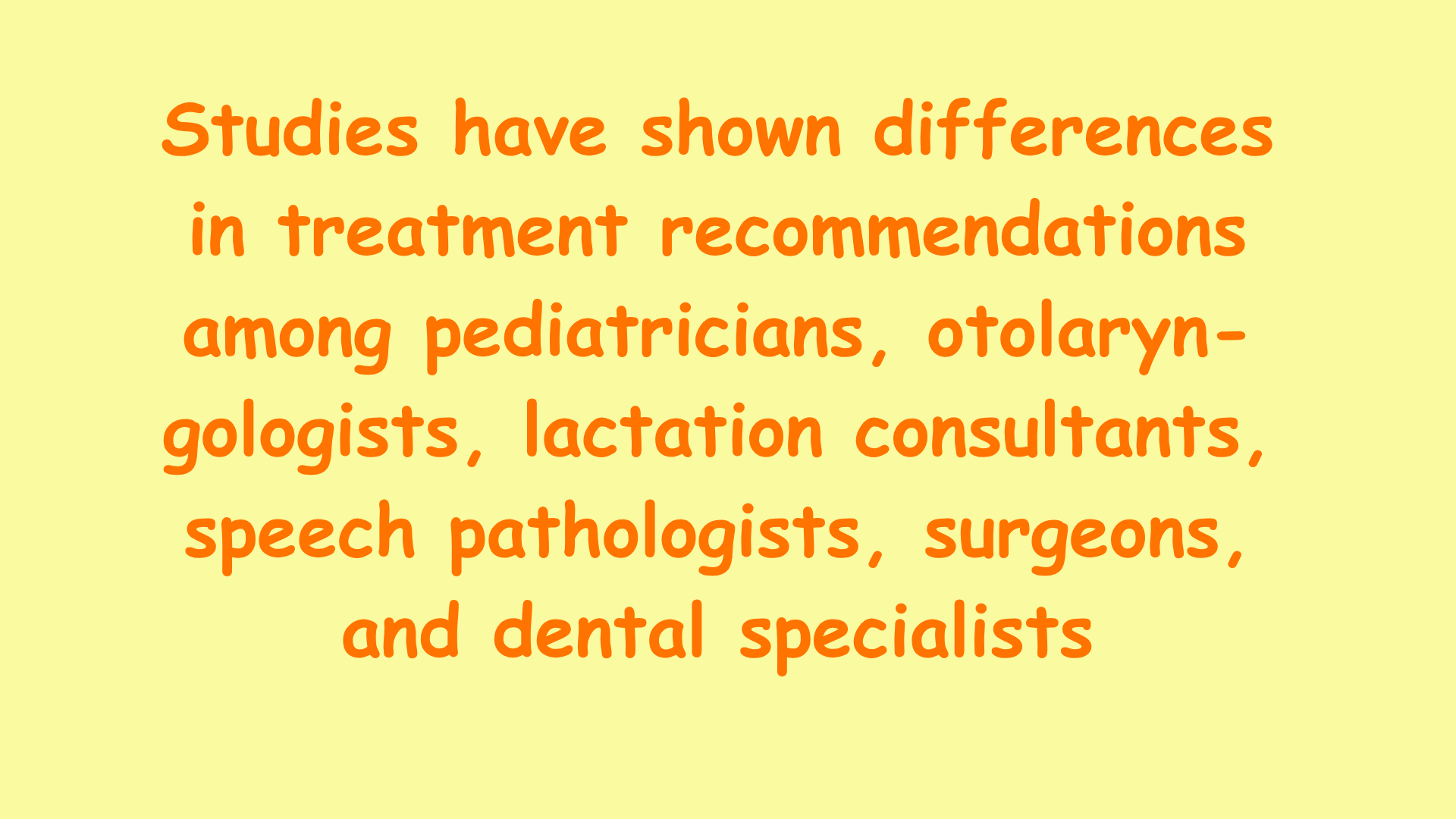
Importantly, both the AAP and AAPD emphasize that treatment decisions should prioritize function over appearance. A visible frenum does not always equal a restrictive tie.
Many infants with apparent ties breastfeed successfully without intervention when provided with expert lactation support.
Compassionate Care for Families
1-Breastfeeding is an emotional journey. For parents facing feeding difficulties, the decision of whether to pursue a frenulotomy can feel overwhelming. It is essential to acknowledge:
- Your experience is real
- Your frustrations are valid
- You deserve support, not judgment
- Your baby is loved no matter what
- You are doing your best as a caring parent
- It is completely normal (and highly encouraged) to look for all the support you can get
- Get more than one opinion and reach out to knowledgeable professionals
- Accept family (and friends) support in all forms
2- For parents of children and teens that have a lip or a tongue tie and wish to explore the benefits of addressing the frenulum tissues, we will be exploring:
- Position and type of frenulum tissues
- The benefits and timing of a frenulecomty:
- Lip tie procedure timing: Ideally before the upper front primary incisors are switched into permanent incisors. This helps to enhance the natural tissue remodeling that occurs at this stage of development
- Tongue tie procedure timing: Once speech and myofucnationl therapy sessions have been established so that they continue after the procedure. This will ensure maximum benefit to the child and increase the chances of overall success
3-The procedure:
Using our Solea laser, frenulotomies and frenulectomies are completed swiftly and easily with high percision and meticulous accuracy. For infants, we typically rely soley on a strong compound topical anesthetic. Most babies can breastfeed immediately right after the procedure. In fact, we hightly encourage this for both baby’s and mother’s soothing and to assess the breastfeeding process post frenulotomy.
For children, we will usually add a few drops of local anesthetic using our computerized dental anesthesia delivery system (The STA) and offer sedation options to augment comfort. The actual surgical time is truly short, with the procedure being completed in under a minute for infants and in a few minutes for children and teens. The Solea unit ensures no bleeding, clean tissue ablation and accelerated post operative healing. No sutures are typically needed.
4- What to expect after a frenulotomy/frenulecomty:
When a mindful decision is taken to move forward with a frenulotomy/frenulectomy, it is incredibly important that proper home care and follow-up instructions be explained in detail to parents. This is becuase the success of the proedure highly relies on follow-up care.
For infants, the site of the frenotomy requires daily stretches and wound care. Parents are taughts to gently run a clean finger between the upper lip and the gum pads and under the infant’s tongue to help the tissues heal in the correct position rather than reattach with scar tissue. Infant oral tissues have an extremely high healng capacity. Without these daily physical manipulations, that require deligance and complince, it is not uncommon for untended tissues to reattach in their original position.
For older children, gentle oral hygiene and soft diet choices are key. In general, the procedure is well tolerated and post operative discomfort is mild to minimal. Cold thermal therapy is remarkably effective in calming the tissues. Minor doses of Tylenol or Motrin can also be used if needed. We recommend that speech therapy and myofuncitonal visits be resumed as soon as possible to aid in proper, functional healing.
4-The best outcomes of frenulotomies and frenulectomies result from collaborative care, including:
- Experienced pediatricians, pediatric dentists, ENT specialists and body workers
- International Board-Certified Lactation Consultants (IBCLCs)
- Feeding therapists, speech therapists and myofunctional specialists
Every baby is unique, and every treatment plan should reflect your child’s and family’s individual needs and honor you, the loving parents as well as your baby.
My Approach as a Board-Certifed Pediatric Dentist:
In our west los angeles pediatric and orthodontic dental practice, we evaluate each child thoughtfully considering the family dynamic and the specific concerns of parents. Our mindful assessment includes:
- A visual and functional oral assessment
- Infant/child health and feeding patterns
- Parental and family support
- Collaborative input from other specialists liked lactation consultants and pediatricians
Not every tongue or lip tie requires release. In fact, many can be observed and monitored for future changes if the breastfeeding mother finds the support that she needs in altrnative ways. Also, if speech and myofunctional specialists succeed in improving a child’s articulation and oral functions, there may not be a need for surgical intervention.
The idea of “mindful intervention” is a super important one as we learn more about long term changes for infants and children who are undergoing these procedures now.
When intervention is truly needed, the goal is to achieve notable improvements with excellent healing. We aim for a high success rated with limited postoperative challenges.
Feedback from breastfeeding mothers should report much relief in both breastfeeing, infant/mother bonding and overall baby comfort. In children, oral tissues should heal esthetically, orthodonic spacing should be easy to resolve and long-term periodontal health be estalished.
Speech therapy should also progress at an improved rate. For these goals to be met, a sound foundation of communication, clear expectation and full commitment is needed from the parents and all involved practitioners.
Our Magical Solea Laser:
Solea is a state-of-the-art CO2 laser technology that is an excellent instrument to achieve successful and efficient frenulotomies/frenulectomies. Solea reshapes this surgical procedure with:
- Minimal discomfort
- Minimal to no bleeding
- No sutures
- Precise control
- Short procedure times
- Rapid healing
Where Does the Professional Community Stand Today?
While much has been learned, much is still under study. The American Academy of Pediatrics, the American Academy of Pediatric Dentistry, and a growing body of researchers continue to investigate:
- When early intervention is most beneficial
- How to define true functional restriction
- The long-term developmental impact of tethered oral tissues
- The long-term impact of performed frenulotomies/Frenectomies
This ongoing work reflects both the complexity of the issue, and the medical community’s commitment to offering parents the most ethical, evidence-based care possible.
You Are Not Alone
Mothers, if you are struggling with breastfeeding, or simply have concerns about your baby’s oral development, I invite you to schedule a consultation. Together, we can explore your baby’s needs, review all options, and create a care plan grounded in both science and compassion so you and your newborn can thrive in ease, joy, and comfort.

Parents and families, if you are wondering about your child’s speech, the appearance of their smile, dental spacing or orthodontic management, we would love to meet you and review mindful options.
Tongue-tie and lip-tie in infants and children with evidence-based ankyloglossia assessment, frenotomy/frenulecomty procedures, and breastfeeding solutions. Compassionate care for feeding difficulties, nipple pain, and latch problems supporting mothers and babies. Growth monitoring for tethered oral tissues in children. Guided by Dr. Reem Kabbarah, expert pediatric dentist in West Los Angeles.



